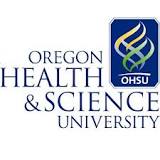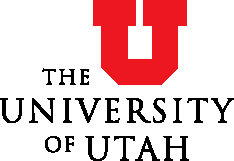Clinical Outcomes Following Glenoid Neck Fracture as Correlated With Quantitative Assessment of Osseous Injury
| Status: | Active, not recruiting |
|---|---|
| Conditions: | Hospital, Orthopedic |
| Therapuetic Areas: | Orthopedics / Podiatry, Other |
| Healthy: | No |
| Age Range: | 18 - Any |
| Updated: | 9/8/2018 |
| Start Date: | March 2008 |
| End Date: | December 2019 |
A significant subset of patients with scapula fractures also involves the glenoid neck (bone
joining the shoulder joint the scapular body). There is little evidence pertaining to the
best treatment or precise definition of these lesions. This study will be designed as a
prospective, non-randomized cohort study that will collect outcome and radiological data on
patients who have sustained a fracture of the glenoid neck (bone joining the shoulder joint
the scapular body) for a period of 1 year. All patients who have sustained extraarticular
scapula fractures (any fracture not involving the glenoid surface) will be considered.
Information will be collected with respect to the radiographic characteristics of osseous
injuries as well as functional outcome over time.
joining the shoulder joint the scapular body). There is little evidence pertaining to the
best treatment or precise definition of these lesions. This study will be designed as a
prospective, non-randomized cohort study that will collect outcome and radiological data on
patients who have sustained a fracture of the glenoid neck (bone joining the shoulder joint
the scapular body) for a period of 1 year. All patients who have sustained extraarticular
scapula fractures (any fracture not involving the glenoid surface) will be considered.
Information will be collected with respect to the radiographic characteristics of osseous
injuries as well as functional outcome over time.
Extraarticular fractures (fracture not involving the glenoid articular surface) of the
scapula (shoulder blade) have been traditionally managed nonoperatively. The logic for this
course of treatment was based on the healing potential of the extensive muscular envelop of
the scapula, the inherent mobility of the shoulder joint, and the difficulty in objectively
assessing the degree of injury given its irregular osseous architecture.
Scapular fractures specifically involving the glenoid neck have the potential to
significantly change the geometry of glenohumeral joint (shoulder joint) as well as affect
the actions of muscles and nerves that act across it. Although most reports indicate patients
sustaining glenoid neck fractures did well following nonoperative treatment, there was little
use of validated outcome measures. Additionally, the context of severe trauma may have lead
to an underestimation of functional recovery.
Advances in imaging technology combined with the evolution of internal fixation techniques
have resulted in sporadic attempts at fixation of glenoid neck fractures, usually when they
occurred in concert with bony injury to other members of the shoulder girdle, as in the
"floating shoulder". However, in the absence of a universal canon of radiograph measurements,
there are no current recommendations for operative versus non-operative management based on
the characteristics of osseous injury as correlated with probable clinical outcome. Moreover,
the common assertion that nonoperative management of scapular fractures leads to adequate
functional outcome has not been rigorously examined in a prospective fashion, despite this
being the standard of care nationally.
Recent evidence suggests that nonoperative treatment may lead to significant decreases in
strength and forelimb function despite the fact that the standard of care for the vast
majority of these injuries does not involve surgery or reduction. The same may be true of
glenoid neck fractures, as significant shortening or angulation of this metaphyseal isthmus
may have a detrimental effect on the functional geometry of the glenohumeral (shoulder)
joint. If so, surgical management may be indicated to restore a more physiologic geometry to
the joint, and thereby give the best chance of recovery to a pre-injury level of function. It
is our hope that these correlates of measurements and outcome will help codify an a priori
set of radiograph evaluation criteria to help guide decisions for surgical versus
non-operative management of glenoid neck fractures. The purpose of the study is to: 1) define
the degree of forelimb dysfunction brought about by this specific injury and 2) the magnitude
of osseous injury to the glenoid neck that can be tolerated before functional outcome is
unacceptably impeded.
scapula (shoulder blade) have been traditionally managed nonoperatively. The logic for this
course of treatment was based on the healing potential of the extensive muscular envelop of
the scapula, the inherent mobility of the shoulder joint, and the difficulty in objectively
assessing the degree of injury given its irregular osseous architecture.
Scapular fractures specifically involving the glenoid neck have the potential to
significantly change the geometry of glenohumeral joint (shoulder joint) as well as affect
the actions of muscles and nerves that act across it. Although most reports indicate patients
sustaining glenoid neck fractures did well following nonoperative treatment, there was little
use of validated outcome measures. Additionally, the context of severe trauma may have lead
to an underestimation of functional recovery.
Advances in imaging technology combined with the evolution of internal fixation techniques
have resulted in sporadic attempts at fixation of glenoid neck fractures, usually when they
occurred in concert with bony injury to other members of the shoulder girdle, as in the
"floating shoulder". However, in the absence of a universal canon of radiograph measurements,
there are no current recommendations for operative versus non-operative management based on
the characteristics of osseous injury as correlated with probable clinical outcome. Moreover,
the common assertion that nonoperative management of scapular fractures leads to adequate
functional outcome has not been rigorously examined in a prospective fashion, despite this
being the standard of care nationally.
Recent evidence suggests that nonoperative treatment may lead to significant decreases in
strength and forelimb function despite the fact that the standard of care for the vast
majority of these injuries does not involve surgery or reduction. The same may be true of
glenoid neck fractures, as significant shortening or angulation of this metaphyseal isthmus
may have a detrimental effect on the functional geometry of the glenohumeral (shoulder)
joint. If so, surgical management may be indicated to restore a more physiologic geometry to
the joint, and thereby give the best chance of recovery to a pre-injury level of function. It
is our hope that these correlates of measurements and outcome will help codify an a priori
set of radiograph evaluation criteria to help guide decisions for surgical versus
non-operative management of glenoid neck fractures. The purpose of the study is to: 1) define
the degree of forelimb dysfunction brought about by this specific injury and 2) the magnitude
of osseous injury to the glenoid neck that can be tolerated before functional outcome is
unacceptably impeded.
Inclusion Criteria:
- Adults 18-65 and 65+
- Extraarticular scapular fractures Scapular fracture is isolated or in concert with
nondisplaced ipsilateral fractures of the clavicle, coracoid or acromion or has a
clavicle fracture been operatively reduced or fixed?
- Patient is free of preexisting neuromuscular or psychiatric dysfunction
- Patient is free of previous upper extremity injury that would impede objective
functional outcome evaluation
- Patient received a CT scan as part of their initial clinical care
- Patient is English speaking
- Patient is signed the informed consent form
Exclusion Criteria:
- Preexisting upper extremity injury or neuromuscular condition
- Displaced fractures of the acromion, clavicle, or coracoid
- Concomitant injury to the forelimb
- Patients mentally or physically unable to perform the function evaluation
- Patients unwilling or unable to follow up for 1 year
- Patients with poor propensity to follow up; drug, alcohol issues, etc.
- Non English speaking patients
- Patients currently or pending incarceration in prison
We found this trial at
13
sites
University of Utah Research is a major component in the life of the U benefiting...
Click here to add this to my saved trials
425 University Blvd.
Indianapolis, Indiana 46202
Indianapolis, Indiana 46202
(317) 274-4591

Principal Investigator: Brian Mullis, MD
Indiana University INDIANA UNIVERSITY is a major multi-campus public research institution, grounded in the liberal...
Click here to add this to my saved trials
3181 Southwest Sam Jackson Park Road
Portland, Oregon 97239
Portland, Oregon 97239
503 494-8311

Principal Investigator: Darin Friess, MD
Oregon Health and Science University In 1887, the inaugural class of the University of Oregon...
Click here to add this to my saved trials
1500 E Medical Center Dr
Ann Arbor, Michigan 48109
Ann Arbor, Michigan 48109
(734) 936-4000

University of Michigan Health System The University of Michigan is home to one of the...
Click here to add this to my saved trials
Click here to add this to my saved trials
Click here to add this to my saved trials
Fort Worth, Texas 76104
Principal Investigator: Cory Collinge, MD
Click here to add this to my saved trials
Grand Rapids, Michigan 49525
Principal Investigator: Cliff Jones, MD
Click here to add this to my saved trials
Click here to add this to my saved trials
Minneapolis, Minnesota 55414
Principal Investigator: Andrew Schmidt, MD
Click here to add this to my saved trials
University of Oklahoma The OU Health Sciences Center is composed of seven health-related colleges located...
Click here to add this to my saved trials
Click here to add this to my saved trials

